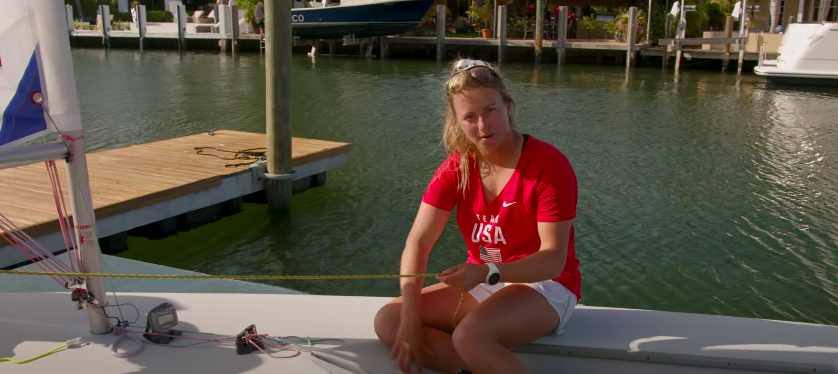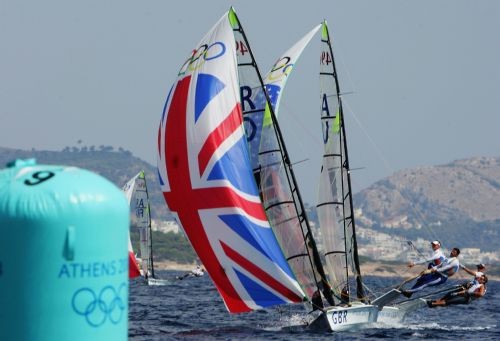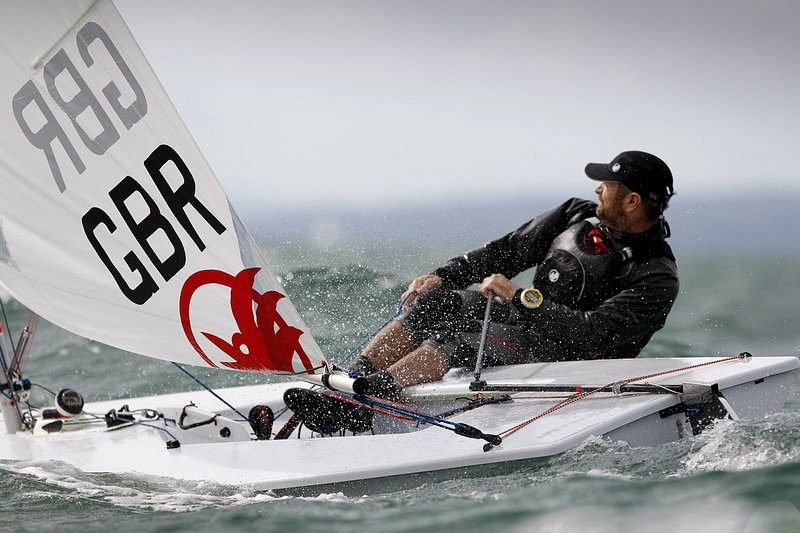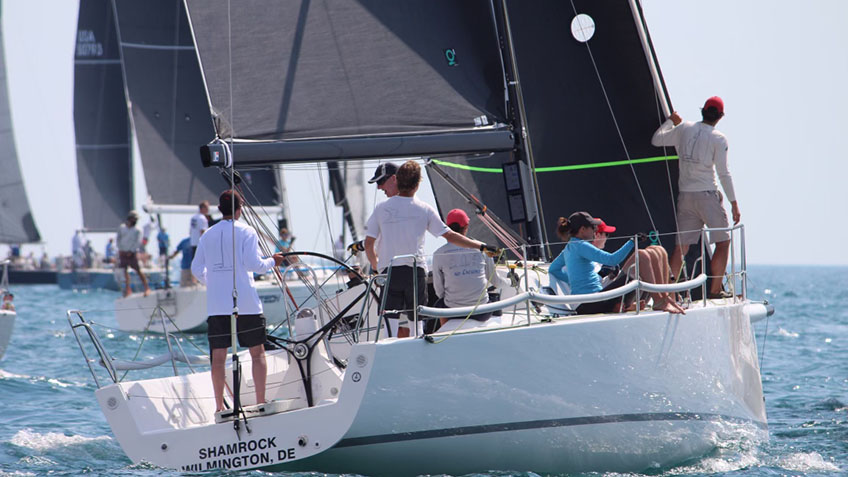Fine-tuning your downwind sailing is just as important as fine-tuning your upwind sailing. Most boats with asymmetrical spinnakers will benefit from sailing the boat differently in the three different modes off the wind.
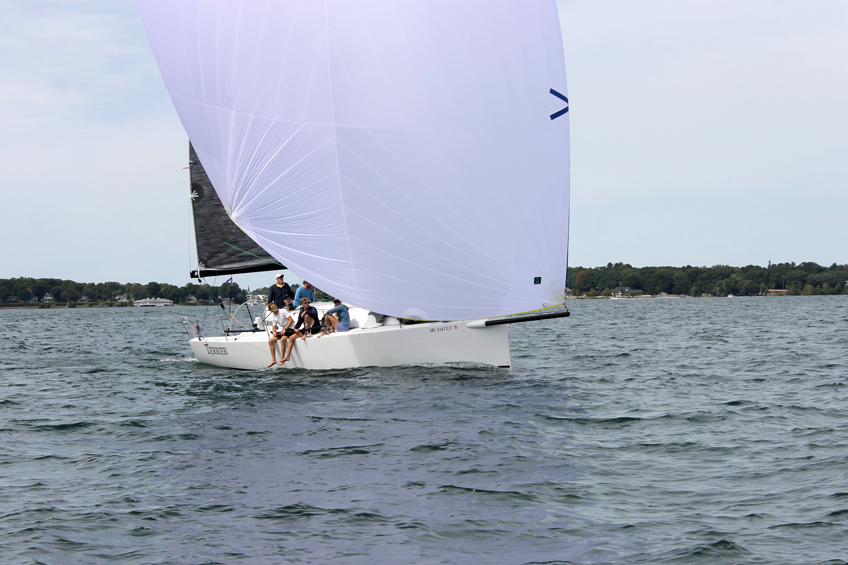
MODE #1: NEED POWER
Need Power (0-5 kts): In light wind, the goal is to keep the wind attached to the sails from luff to leech. As with sailing upwind, when sailing downwind, the main and asymmetrical spinnaker need to be set so the wind can flow easily from luff to leech. In very light wind, the asymmetrical spinnaker should be flatter and a bit smaller than the sail used in the 9-13-knot range. The main should also be set flatter to allow the wind to stay attached to each side of the sail luff to leech. You want a shorter, stable luff on the asymmetrical spinnaker and a twisted, open leech on the asymmetrical spinnaker and mainsail. Smooth sails and twisty exits will help you in these conditions. Imagine looking at both sails from behind the boat. You want to see the two leeches matching and with a similar twist. This open look will allow the wind to exit easily without stalling. The shorter and more stable luff on the asymmetrical will allow the wind to attach to the sail easily.
Checklist for 0-5 kts
- 10˚ of heel and -1˚ of bow down trim
- Three crew members in front of mast; trimmer to windward and main trimmer in cabin area
- Tactician near mast area and looking aft to windward for wind
- Helmsman steering by apparent wind angle (AWA)
- Targets = true wind angle (TWA). In these conditions, steering with AWA is easier
- Backstay on to flatten mainsail 25%
- Outhaul off 25%
- Trimmer speaking to helmsman on pressure reference TWA
- Vang off 100% positive push-up
- Luff telltales on luff of A1. Leech telltale on main flowing 100%
- Smaller/flatter asymmetrical spinnaker
Need Power (6-8 kts): As the wind increases, the boat starts to come alive in this range and we use TWA as a target rather than AWA. The flatter sail is still used so the boat can sail at an optimum velocity made good (VMG).
Checklist for 6-8 kts
- 5˚of heel and -1˚ bow down trim
- Vang off and boom trimmed near quarter with open upper leech
- Weight position forward for -1˚ trim, yet a bit flatter with 5˚ leeward heel
- Three crew members in front of mast with trimmer to windward and main trimmer near helmsman
- Tactician near mast area and looking aft to windward for breeze
- Helmsman steering using target of TWA 145
- Backstay off 100%
- Outhaul off 30%
- Vang off 100%
- Luff telltales on sail. Leech telltale on main flowing 100%
MODE #2: PERFECT POWER
Perfect Power is the condition preferred by most teams. The wind speed is usually around the 9-13 knot range, and all the sails are trimmed as designed. The crew is on the windward side hiking, while the entire team is focused on sailing the boat at the proper target speed and angle. Little changes can make big gains in this range. Attention to detail with sail controls and crew weight will make all the difference. Be sure to have the crew flatten in puffs whenever they feel the boat start to heel up.
Checklist for 9-13 kts
- 0-5+˚ of windward heel and 0˚ trim fore and aft
- Vang setting to make the mainsail match the leech of A2
- Steering target of TWA 150-155
- Backstay off
- Outhaul off 25%
- Telltales on upper leech of main flowing 100%
- 2 crew members forward of shrouds to windward and sitting on cabin ready to lean out in puffs
- Spinnaker grinder calling pressure while looking windward aft quarter
- On puffs, all crew pushes down on upper lifeline to flatten boat
- During lulls, all crew sit on cabin to allow boat to naturally turn up
- The less the rudder moves, the faster the boat sails
MODE #3: TOO MUCH POWER
Too Much Power (14-18 kts): As the breeze starts to build, crew weight begins moving aft, and it's crucial to hike the boat flat in puffs. Flat is fast. The trimmers should be trimming all sails in sync and working together to catch waves if conditions permit.
Checklist for 14-18 kts
- Heel 0˚ and trim up +1˚ fore and aft. All crew aft of shrouds
- Jib down sailing target TWA 155-165
- Vang on 40%, top telltale stalling 25% traveler in middle
- Active main trimming, wave catching
- A2 active trim with main on wave, holding all lines in hand
- Outhaul on 90%
- Backstay on 25%
- Active crew movement with puffs
- Spinnaker grinder calling puffs while looking aft to windward
Too Much Power (19-25 kts): As the wind increases, the decision to sail VMG (lower) or plane starts in the J/111.
Checklist for 19-25 kts
- Jib is up and trimmed as far to leeward as possible
- Bow up, +2˚ trim and 10˚ of heel
- Target TWA 150-145
- Helmsman steering on heel angle of 10˚
- Outhaul on 100%
- Vang off 100%
- Traveler to leeward
- Active main sheet from block, trim hard when planing
- Backstay on 75%
- Spinnaker grinder calling puffs
- Crew hiking to windward, 3 aft of shrouds
- Jib sheet cleated for jibe, allowing the spinnaker to blow through
The J/111 and similar boats are fun to sail in all kinds of weather conditions. Off the wind is this boat’s strength. There may be more adjustments upwind, but off the wind the movement of the crew alone will make a difference. In the Perfect and Too Much Power modes, the movement of the crew will minimize the turning of the rudder. This will make the boat faster and sail a better VMG. Have someone call the breeze and use numbers to get the team moving together at the same time. Knowing the differences between these three downwind modes will make your time on the water even more enjoyable.
For more information on how to set up the three downwind modes for your boat, contact Wally Cross wcross@quantumsails.com.
Article from Quantum Sails
Three modes Upwind can be found here: https://www.sailjuice.com/articles/three-modes-upwind


